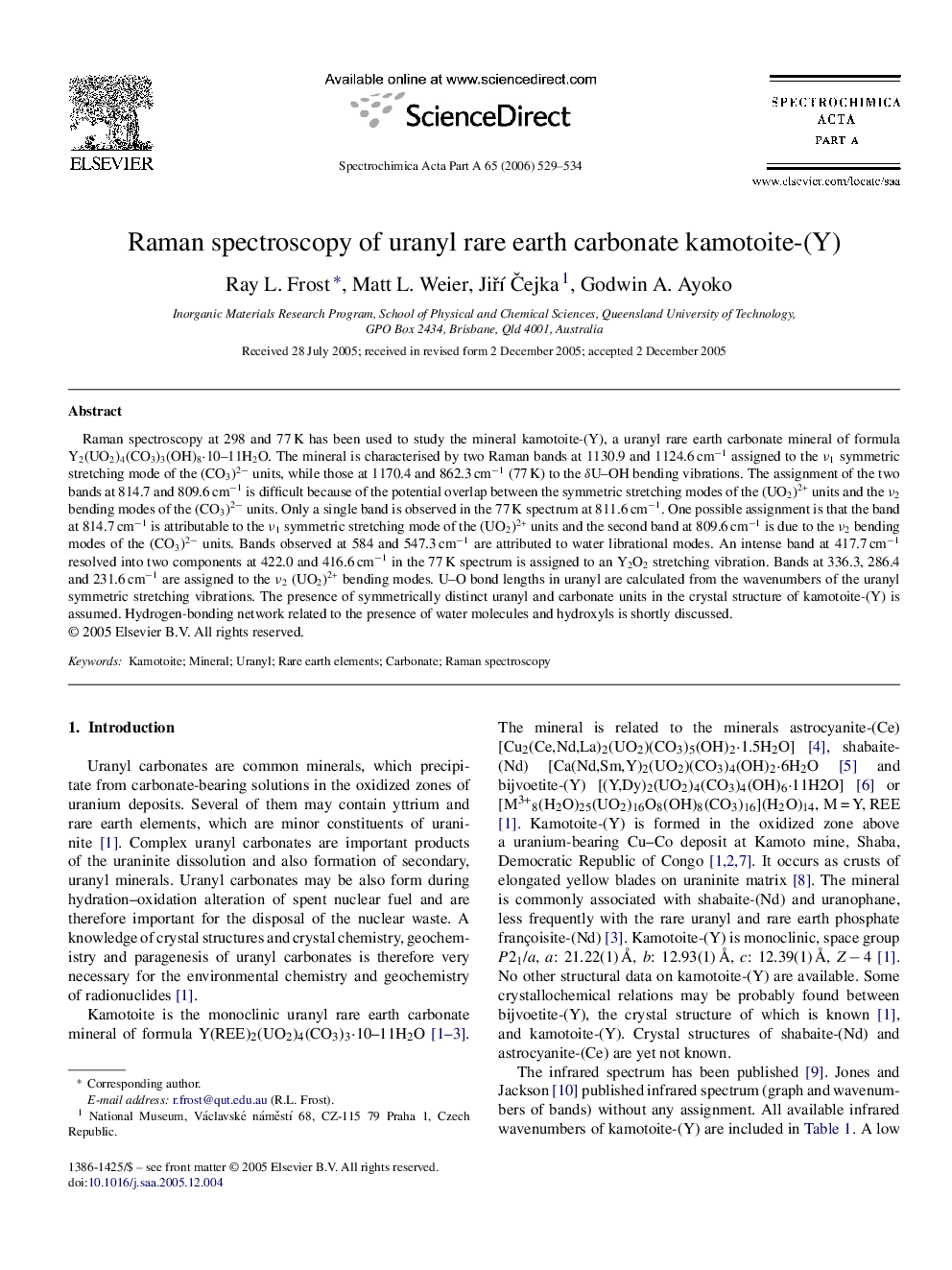| Article ID | Journal | Published Year | Pages | File Type |
|---|---|---|---|---|
| 1236280 | Spectrochimica Acta Part A: Molecular and Biomolecular Spectroscopy | 2006 | 6 Pages |
Raman spectroscopy at 298 and 77 K has been used to study the mineral kamotoite-(Y), a uranyl rare earth carbonate mineral of formula Y2(UO2)4(CO3)3(OH)8·10–11H2O. The mineral is characterised by two Raman bands at 1130.9 and 1124.6 cm−1 assigned to the ν1 symmetric stretching mode of the (CO3)2− units, while those at 1170.4 and 862.3 cm−1 (77 K) to the δU–OH bending vibrations. The assignment of the two bands at 814.7 and 809.6 cm−1 is difficult because of the potential overlap between the symmetric stretching modes of the (UO2)2+ units and the ν2 bending modes of the (CO3)2− units. Only a single band is observed in the 77 K spectrum at 811.6 cm−1. One possible assignment is that the band at 814.7 cm−1 is attributable to the ν1 symmetric stretching mode of the (UO2)2+ units and the second band at 809.6 cm−1 is due to the ν2 bending modes of the (CO3)2− units. Bands observed at 584 and 547.3 cm−1 are attributed to water librational modes. An intense band at 417.7 cm−1 resolved into two components at 422.0 and 416.6 cm−1 in the 77 K spectrum is assigned to an Y2O2 stretching vibration. Bands at 336.3, 286.4 and 231.6 cm−1 are assigned to the ν2 (UO2)2+ bending modes. U–O bond lengths in uranyl are calculated from the wavenumbers of the uranyl symmetric stretching vibrations. The presence of symmetrically distinct uranyl and carbonate units in the crystal structure of kamotoite-(Y) is assumed. Hydrogen-bonding network related to the presence of water molecules and hydroxyls is shortly discussed.
